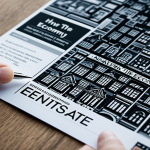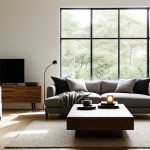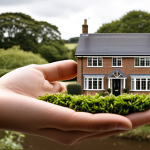Immediate Benefits of Sustainable Home Designs
Sustainable living benefits extend beyond environmental impact; they create a healthy home environment that promotes overall well-being. One of the most immediate advantages is enhanced indoor air quality. Sustainable homes utilize natural, non-toxic building materials and efficient ventilation systems, which reduce exposure to harmful chemicals and allergens. This means occupants breathe cleaner air, preventing respiratory issues and boosting general health.
Additionally, sustainable designs improve comfort levels by regulating temperature and reducing noise. Through thermal control—achieved with proper insulation and strategic window placement—homes stay cooler in summer and warmer in winter without excessive energy use. Noise reduction, often overlooked, also contributes to a serene, peaceful living space.
Topic to read : How Can UK Homeowners Efficiently Maximize Indoor Space?
The impact on well-being is profound. Living in a space free from toxins and temperature extremes decreases stress and supports physical health. Studies consistently link sustainable home environments with improved mental health, attributing this to better air quality and comfortable, quiet interiors. By adopting sustainable home designs, residents experience a fuller sense of comfort and vitality, making everyday life healthier and more enjoyable. Sustained benefits underscore the importance of these eco-friendly choices in creating not just a house but a nurturing home.
Core Principles of Sustainable Home Design
Understanding sustainable home features is essential to grasp how eco-friendly design shapes modern living. At its core, sustainable design focuses on two main principles: energy efficiency and resource conservation. This means creating homes that use less energy and water while minimizing waste throughout their lifecycle.
Also read : How Can You Transform Your Home into a Cozy Retreat on a Budget?
A key element is selecting materials and systems that promote sustainability. For instance, renewable or recycled materials reduce the environmental footprint, while energy-efficient appliances and lighting decrease utility demands. Incorporating water-saving fixtures also aligns with conserving precious resources.
Passive design strategies form the backbone of an energy-smart home. These include orienting windows for optimal sunlight, using proper insulation to maintain indoor temperatures, and designing natural ventilation pathways. Such strategies reduce dependence on mechanical heating or cooling systems, further lowering energy use.
Altogether, eco-friendly design integrates technology and thoughtful planning to produce homes that work with nature, not against it. By applying these core principles, homeowners benefit from lower energy costs, greater comfort, and significant environmental benefits, all while supporting a future-oriented lifestyle.
Practical Advantages for Homeowners
Sustainable living benefits translate into significant utility savings for homeowners. Energy-efficient appliances and carefully designed insulation reduce electricity and heating costs immediately. For example, passive solar heating can lower winter energy bills, while water-conserving fixtures cut monthly water use. These savings add up, making sustainable homes more affordable to operate.
Alongside financial benefits, sustainable homes demand less upkeep. Durable, eco-friendly building materials—such as recycled composites and natural stone—resist wear and tear better than conventional options. This lowers long-term maintenance costs and reduces the need for frequent repairs, helping homeowners maintain their investment with less hassle.
The quality of life at home improves as well. With comfort-enhancing features like advanced thermal control and noise reduction, residents enjoy peaceful, consistent indoor climates year-round. This fosters a calming atmosphere that supports both physical and mental well-being.
In addition, properties that incorporate sustainable home features often see increased market appeal. Buyers increasingly value energy efficiency and green design, which can boost resale value. Overall, adopting sustainable design offers homeowners a practical combination of cost savings, ease of maintenance, and enhanced living conditions.
Expert Insights and Real-Life Success Stories
Experts agree that sustainable home case studies provide valuable lessons on achieving truly healthy environments. According to architects specializing in green building, prioritizing air quality and natural ventilation significantly enhances well-being. They advise integrating eco-friendly materials early in the design process to avoid costly retrofits. These expert tips highlight the role of passive design strategies and airtight construction in reducing energy waste while improving indoor comfort.
A notable case study involves an urban apartment retrofit transformed through sustainable living benefits. By installing energy-efficient windows, upgrading insulation, and adding greenery for natural air purification, residents reported lower utility bills and a noticeable boost in mental health. This example demonstrates how smart design choices make compact spaces healthier and more comfortable.
In a suburban setting, a family achieved near self-sufficiency by combining solar power, rainwater harvesting, and a compost system. Their real-life experience showcases how layered sustainable home features improve both environmental impact and daily life quality. Such stories reinforce the practical benefits of embracing eco-friendly design principles in diverse living situations.
Together, these real-life examples and expert insights prove that sustainable home features do more than conserve resources—they create spaces that nurture physical and mental health while offering lasting comfort.
Immediate Benefits of Sustainable Home Designs
A healthy home environment begins with significantly enhanced indoor air quality. Sustainable living benefits arise by reducing toxins through the use of natural, low-emission materials that limit volatile organic compounds (VOCs) and other pollutants. This careful material selection curbs exposure to harmful chemicals, which directly supports improved respiratory health.
Thermal control plays a vital role in increasing comfort. Proper insulation, coupled with strategic window placement, stabilizes indoor temperature year-round, reducing the need for excessive heating or cooling. Noise reduction is another immediate benefit; sustainable building designs often incorporate dense walls and double-glazed windows to minimize external sounds, creating tranquil indoor spaces.
The direct impact on improved well-being is measurable. Cleaner air lowers risks of asthma and allergies, while consistent temperature and quietness alleviate stress and enhance mental clarity. Residents often report feeling more relaxed and energized within such environments. These sustainable living benefits contribute not only to physical health but also support a profound sense of balance and vitality, reinforcing why eco-friendly homes do more than conserve energy—they nurture the people inside.
Immediate Benefits of Sustainable Home Designs
Sustainable living benefits start with enhanced indoor air quality. By using natural, low-emission materials, a healthy home environment reduces toxins and limits pollutants like volatile organic compounds (VOCs). This reduction directly improves respiratory health, making breathing easier and reducing risks of asthma and allergies.
Thermal control plays a key role in increasing comfort. Proper insulation and strategic window placement stabilize indoor temperatures throughout the year, lessening reliance on heating and cooling systems. This creates a more comfortable atmosphere and cuts energy consumption. Additionally, noise reduction contributes to tranquility. Sustainable designs often feature double-glazed windows and dense walls to minimize outside noise, helping occupants enjoy peaceful, restful spaces.
These improvements have a direct impact on improved well-being. Cleaner air and consistent temperatures alleviate physical health issues while decreasing stress levels. Quiet environments support mental clarity, helping residents feel more relaxed and energized. The interplay between these factors cultivates not just a house but a nurturing, healthy home environment that promotes greater vitality every day. Such benefits underscore why sustainable living benefits are crucial for both physical and psychological health.






